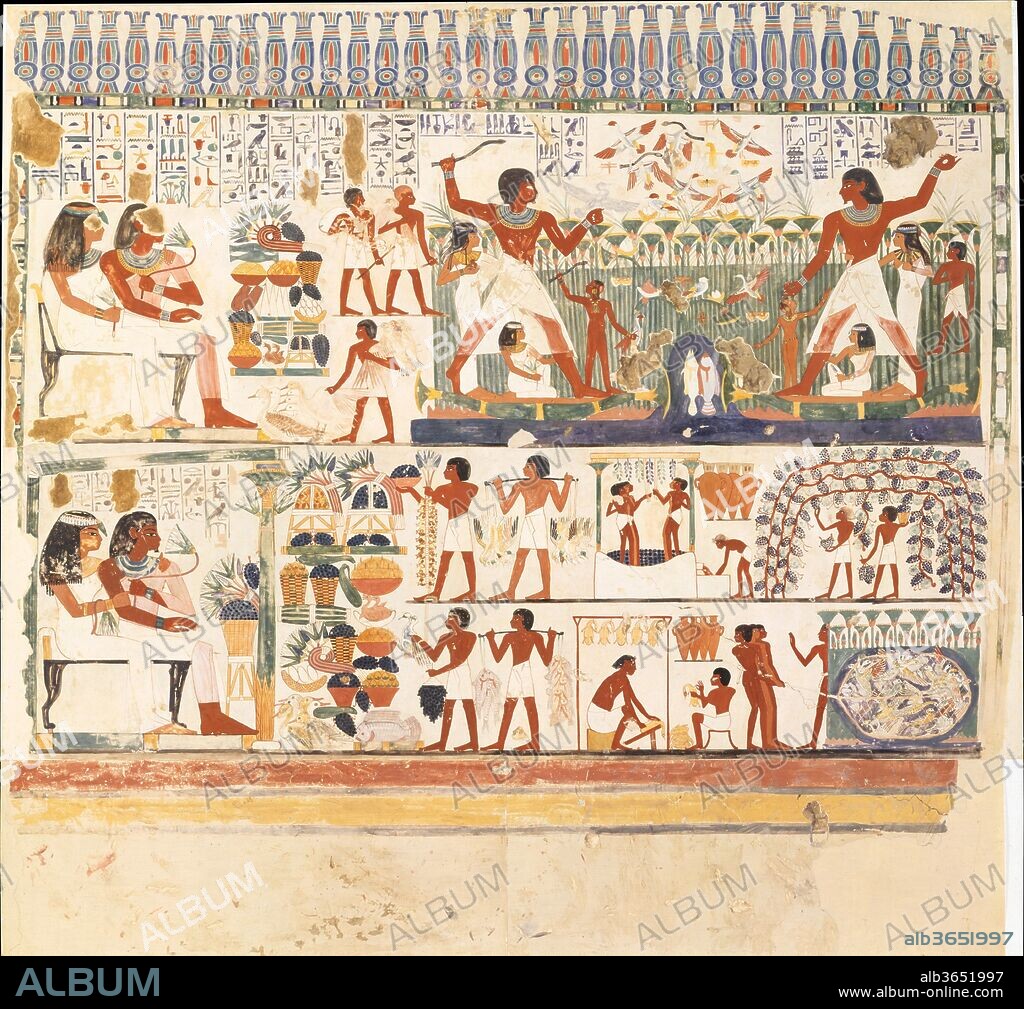alb3651997
NORMAN DE GARIS DAVIES, LANCELOT CRANE, FRANCIS UNWIN (EGYPTIAN EXPEDITION GRAPHIC SECTION). Nakht and Family Fishing and Fowling, Tomb of Nakht

|
Ajouter à une autre Lightbox |
|
Ajouter à une autre Lightbox |



Avez-vous déjà un compte? S'identifier
Vous n'avez pas de compte ? S'inscrire
Acheter cette image

Auteur:
Titre:
Nakht and Family Fishing and Fowling, Tomb of Nakht
Légende:
Traduction automatique: Nakht et pêche et chasse en famille, tombeau de Nakht. Artiste : Norman de Garis Davies (1865-1941) ; Grue Lancelot ; Francis Unwin (Section graphique de l'expédition égyptienne). Dimensions : Télécopieur H. 200 cm (78 3/4 po) ; w. 153 cm (60 1/4 po) échelle 1:1 encadré : h. 194,3 cm (76 1/2 po); w. 203,8 cm (80 1/4 po); ème. 3,2 cm (1 1/4 po). Dynastie : Dynastie 18. Règne : règne d'Amenhotep II-Amenhotep III. Date : env. 1425-1350 avant JC. Ce fac-similé copie un mur entier du tombeau de Nakht (TT 52) à Thèbes. Le mur a été divisé en deux registres avec Nakht et sa femme, Tawy, assis à gauche dans les deux. Sur le côté droit du registre supérieur, Nakht et sa famille sont représentés deux fois : chasse aux oiseaux (à gauche) et pêche (à droite). La moitié supérieure du registre inférieur montre le processus de fabrication du vin et la moitié inférieure montre les oiseaux capturés dans un filet puis préparés pour être stockés dans des bocaux. Le fac-similé a été peint sur la tombe, probablement vers 1909-1910, par Norman deGaris Davies, directeur de la section graphique de l'expédition égyptienne du musée.
Nakht and Family Fishing and Fowling, Tomb of Nakht. Artist: Norman de Garis Davies (1865-1941); Lancelot Crane; Francis Unwin (Egyptian Expedition Graphic Section). Dimensions: Facsimile H. 200 cm (78 3/4 in); w. 153 cm (60 1/4 in)
scale 1:1
framed: h. 194.3 cm (76 1/2 in); w. 203.8 cm (80 1/4 in); th. 3.2 cm (1 1/4 in). Dynasty: Dynasty 18. Reign: reigns of Amenhotep II-Amenhotep III. Date: ca. 1425-1350 B.C..
This facsimile painting copies an entire wall in the tomb of Nakht (TT 52) at Thebes. The wall has been split into two registers with Nakht and his wife, Tawy, seated at the left in both. At the right side of the upper register, Nakht and his family are shown twice: hunting birds (at the left) and fishing (at the right). The upper half of the bottom register shows the process of making wine and the lower half shows birds being caught in a clap-net and then prepared for storage in jars.
The facsimile was painted at the tomb, probably around 1909-1910, by Norman deGaris Davies, director of the Graphic Section of the Museum's Egyptian Expedition.
Technique/matériel:
DETREMPE SUR PAPIER
Période:
NEW KINGDOM
Musée:
Metropolitan Museum of Art, New York, USA
Crédit:
Album / Metropolitan Museum of Art, NY
Autorisations:
Modèle: Non - Propriété: Non
Questions sur les droits?
Questions sur les droits?
Taille de l'image:
3970 x 3707 px | 42.1 MB
Taille d'impression:
33.6 x 31.4 cm | 13.2 x 12.4 in (300 dpi)
 Pinterest
Pinterest Twitter
Twitter Facebook
Facebook Copier le lien
Copier le lien Email
Email
